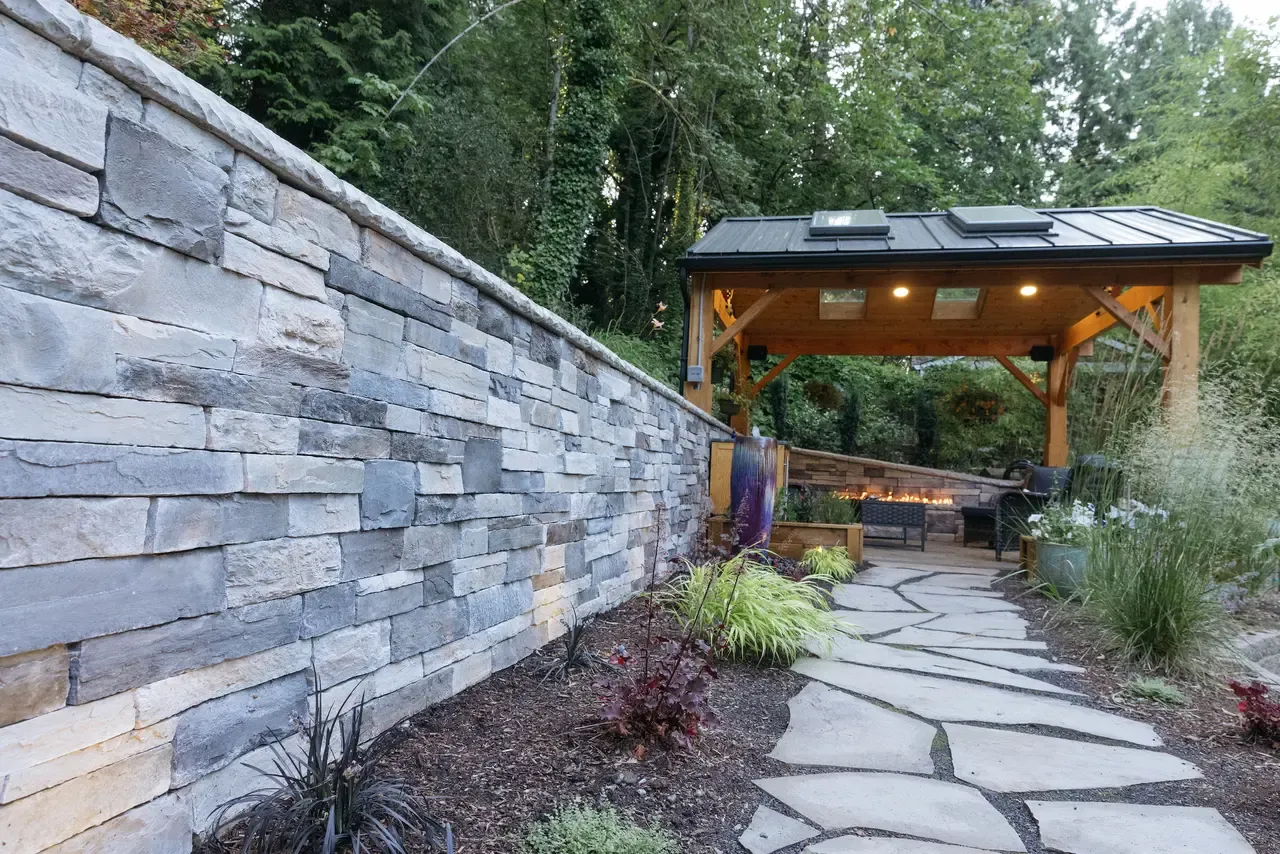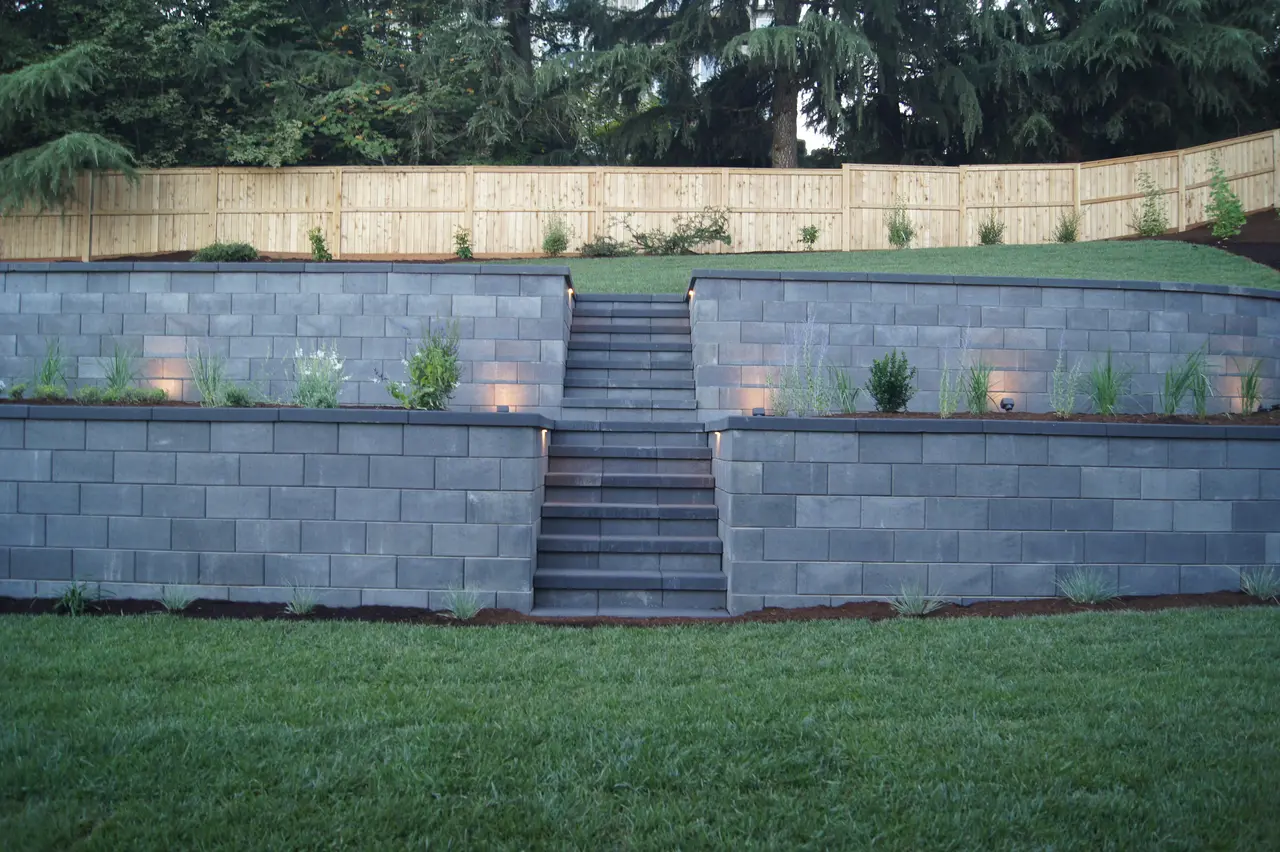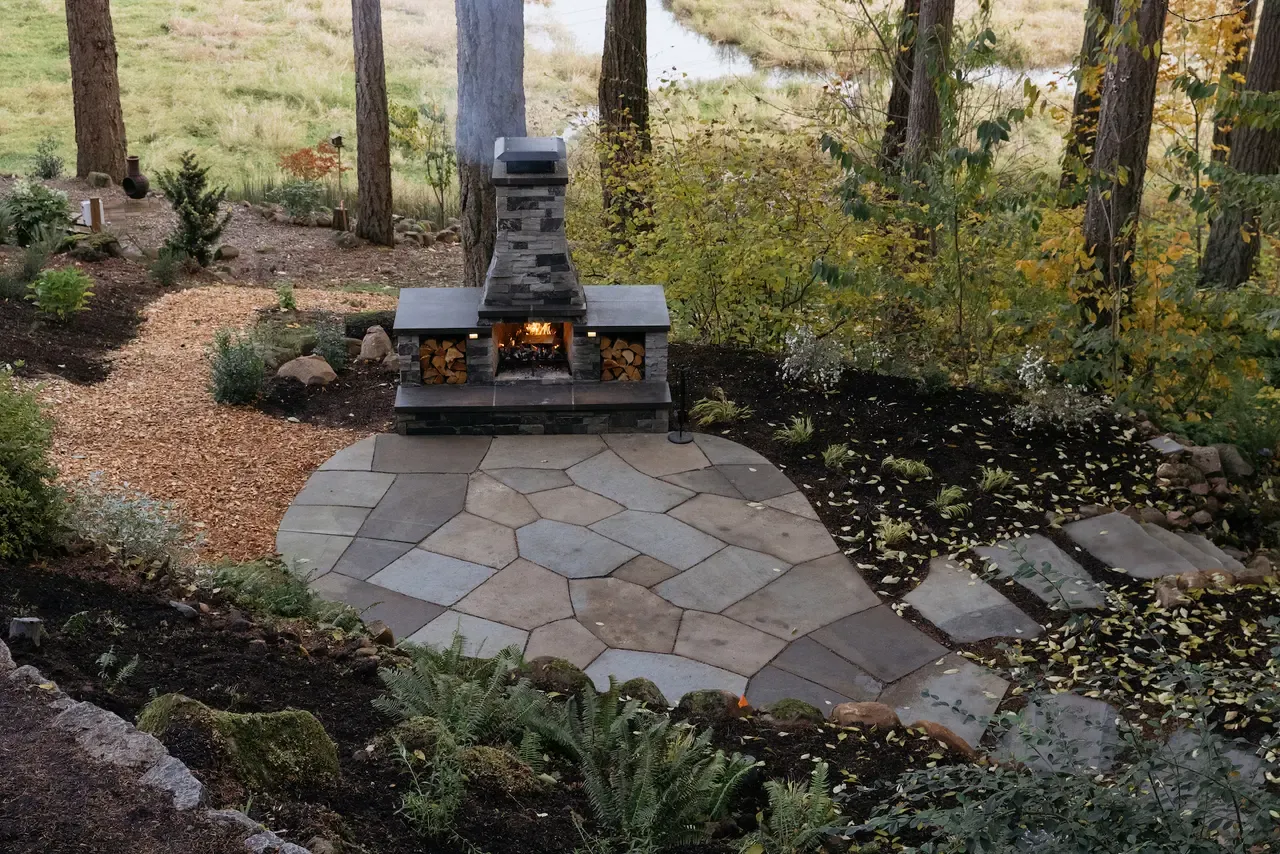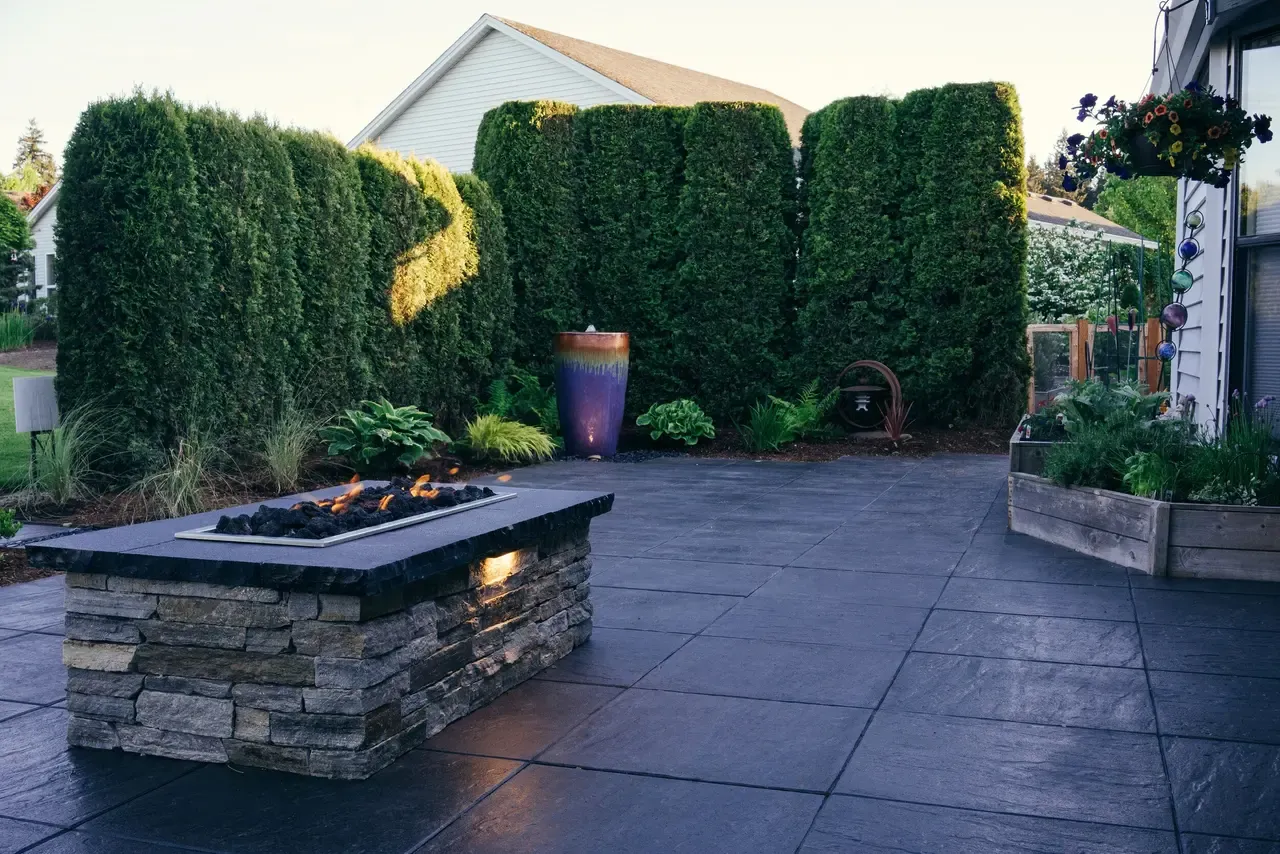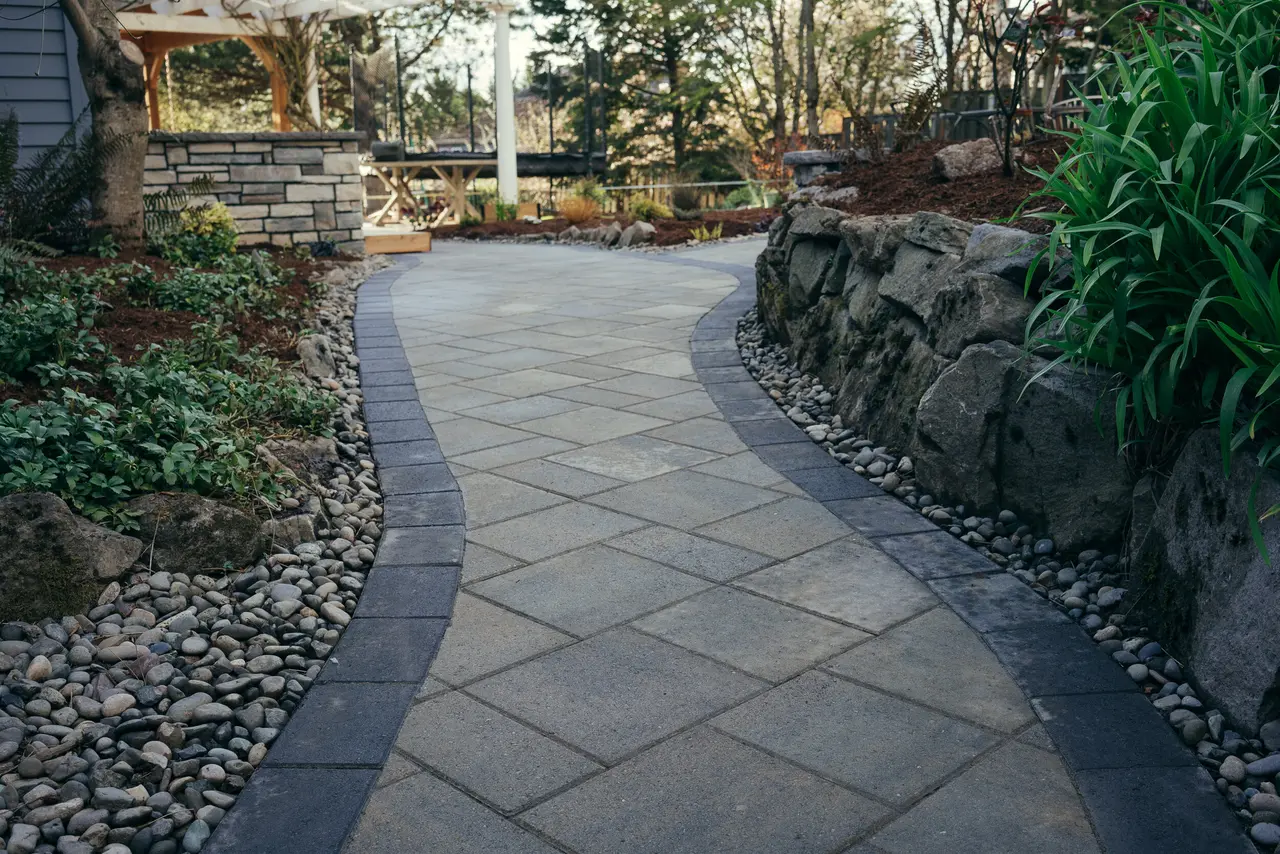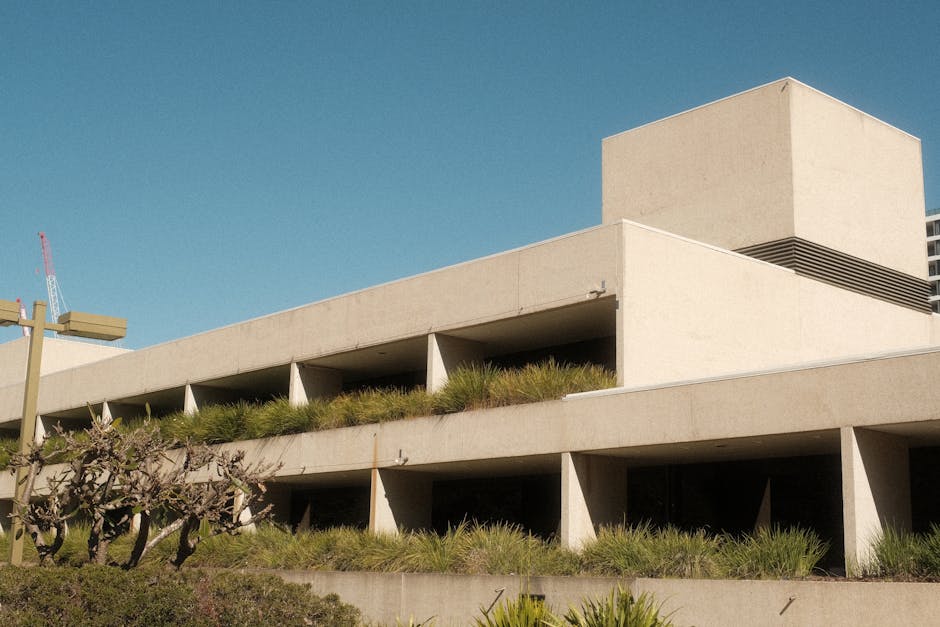How Retaining Walls Can Transform Your Outdoor Space in Portland
Importance of retaining walls
When people call us for retaining walls, they are usually built for 2 reasons. One is a critical structural support of an area that is noticeably moving downhill. A lawn a patio, hopefully not, but sometimes a deck or even a house! The most common is purely for flat functional space. In Portland and Oregon City where we’re based there are lots of hills and especially for smaller lots, a retaining wall can give you enough space either above or below for an entertainment area, a grassy spot to play with the kid etc. They provide structural support and prevent soil erosion and movement. They can also create terraced levels, expanding the options aesthetically of your yard. Good Retaining walls have integrated water management, control soil erosion, and enhance the aesthetic appeal of your outdoor area. So I guess, the 3rd call we get for retaining walls would be for replacements. Lots of wood walls get built for budget and don’t last- especially the 2×6 on a post style- and we see lots of walls with not enough angular drain stone if any and they always fail from hydrostatic pressure.
Benefits of installing a retaining wall
We talked about your usable space, but if you’re clever you can even build a seating level into your masonry wall, choose from a wide range of block and veneer stone options or even create sunken courtyard/ fire pit areas that use the wall for a sense of enclosure and privacy. By installing a retaining wall, you can enhance the overall appeal of your outdoor space while also providing structural support and flat functional spaces you were wanting.
Factors to consider when choosing a retaining wall-
When choosing a retaining wall, consider the height and length needed for your space. The material of the wall, whether it’s natural stone, interlocking block, poured concrete, timber, or a high end veneer stone also plays a significant role in the wall’s appearance and durability. A pro will assess the soil conditions and drainage of your outdoor area before deciding on the type of retaining wall. Professional installation is crucial to ensure the wall is properly constructed and meet longevity expectations and safety standards.
Types of retaining walls suitable for Portland’s climate
In Portland’s climate, the most user friendly and therefore suitable types of retaining walls are interlocking blocks, but you can also use wet cast concrete with some additional considerations, or natural stone, or timber. Concrete blocks come with manufacturer specifications for height and surcharge- this is really important for walls once you get closer to 3 ft. Almost all walls will need special modification after 4 feet and for that reason engineering is required after the 4 ft mark. Interlocking blocks when done well are durable and require no maintenance, making them a popular choice. Natural stone walls provide a natural look that blends well with the surroundings, but take more specialized talent and may not be the best choice for a first time DIY wall builder. Timber walls offer a rustic aesthetic but may require more upkeep over time and may see decreased longevity. Each type has its unique features, so consider the specific requirements of your outdoor space when choosing a retaining wall for Portland. The main thing on all types is angular drain stone, and a water egress plan integrated into the wall.
Design options to enhance your outdoor space
One way to enhance your outdoor space is by incorporating various design options into your retaining walls. Adding elements like colorful stonework, built-in seating, or integrated lighting can transform the look and feel of your outdoor area. You can also consider adding vertical gardens or water features to create a more inviting and vibrant space. These design touches not only improve the aesthetics of your outdoor area but also enhance its functionality, making it a more enjoyable place to spend time in.
Cost considerations for retaining wall installation
When it comes to installing retaining walls in Portland, the cost can vary depending on several factors. Here are some key things to consider: The materials you choose for the wall, and the quality of the face of the block. The size and height of the wall will also influence the price especially after the 4 ft mark. Additionally, factors like the complexity of the design and the labor involved in the installation can affect the final cost. Access too, can be a huge factor for retaining walls. By nature they are built on steep terrain and extra work of road building and planning for crew safety come into play. To get a better idea of the cost for your retaining wall project, it’s best to consult with a professional contractor who can provide an estimate based on your specific needs and preferences. If you’re in the Portland area you can book a consult straight from our website.
Finding the right contractor for your retaining wall project
When looking for a contractor, ask for recommendations from friends or look for online reviews. Get quotes from multiple contractors to compare prices and services. Make sure the contractor is licensed and insured for your protection. Check their portfolio to see examples of their work and ensure it aligns with your vision. Communication is key, so ensure the contractor understands your needs and timeline for the project. If they start talking about using river rock for drainage, then run fast!
Installation process of a retaining wall
Retaining walls are generally built in several steps to ensure stability and durability. The first step involves excavating the area where the wall will be installed. Next, a sturdy foundation is laid to support the wall. Some walls have their own base unit, but most are laid over open graded or dense graded gravels. (3⁄4” clean and 3⁄4” minus respectively) Interlocking blocks lock together and have an integrated system to achieve the batter or step back into the hill. Drainage is crucial to prevent water buildup behind the wall, so drainage pipes are typically installed at or below the first layer of block depending on the gravel type of the base. Clean angular stone is packed behind the wall and possibly one or multiple rows of geo-grid that tie the wall black to the weight of the soils and gravel behind. Finally, the top of the wall is capped to provide a finished look with either a split style block, a cast finished cap, or a coping. A pro tip we like for straight walls is we use olympic paver by the castohn company for a large format cap unit with a wet cast finish on the face and sides. They come in 4 ft lengths!
Maintenance tips for retaining walls in Portland
To maintain your retaining walls in Portland, it’s important to inspect them regularly for any signs of damage or wear. Check for cracks, bulging, or shifting, as these can indicate a problem that needs attention. Well built wall should need almost no maintenance. Just make sure you never add an extra layer or two to any type of retaining wall because it was probably built or engineered for the exact height it is. Adding soil and extra blocks could compromise a finished wall. Maintain proper drainage and try not to change the soil grade where it meets the cap to prevent water buildup that can weaken the walls. Consider resealing your walls every few years to protect them from the elements and boost the color if you like that look. Finally, if you notice any significant issues, it’s best to consult a professional for repair or replacement.
Before and after: The transformation of your outdoor space
Before installing a retaining wall in your outdoor space, consider how it will change the landscape. Retaining walls can improve the functionality and appearance of your yard. They can create level areas for gardens, dining, fire pits or seating. they hold up your slope, but also add visual interest to your outdoor space. Conversely, they will alter the natural slope of your yard. Carefully plan and visualize how the area will look both above and below once the retaining wall is installed. Then let Sage Landscapes handle the build and just sit back and enjoy your new, functional backyard!

